The wide application of the Internet has brought great convenience to life . So put the enterprise it The combination of asset management and current network , utilize Python Technology construction enterprises it Asset management system , Realize the enterprise it Informatization of assets . For further improving the enterprise it Asset management development , Enrich Enterprises it Asset management experience can play a role in promoting .
Enterprises it Asset management system can be widely used through the Internet 、 Comprehensive publicity , Let as many users know the enterprise as possible it Convenient and efficient asset management system , Not only provide services for employees , And also promoted themselves , Let more employees know themselves . For businesses it In terms of assets , If you have your own system , Better management through the system , At the same time, it improves the image .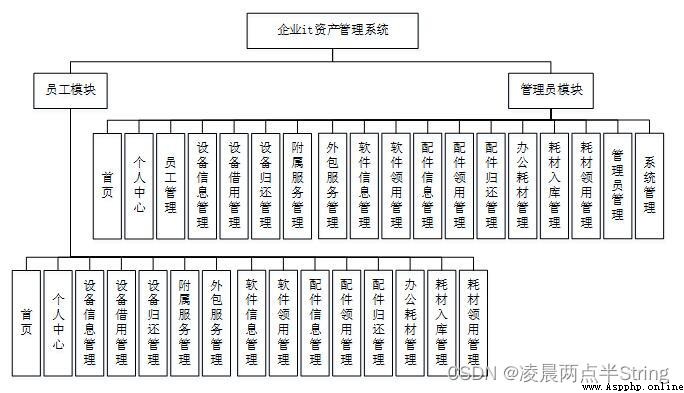
Enterprises it The demand for assets and the continuous improvement of management , Enterprises it The potential of asset management will expand infinitely , Enterprises it Asset management system is widely concerned in the industry , This website and its overall analysis , The enterprise it Provide reference for the development of asset information management . Enterprises it Asset management system is very important to enterprises it Assets have an obvious driving effect .
This system mainly includes administrators and employees ; It mainly includes the home page , Personal center , Employee management , Equipment information management , Equipment borrowing management , Equipment return management , Ancillary service management , Outsourcing service management , Software information management , Software collection management , Accessory information management , Parts collection management , Parts return management , Office consumables management , Consumables warehousing management , Consumables receiving management , Administrator management , Management system with system management and other functions .
System login , Administrators and employees enter user names and passwords , In the role, select administrator , Click login to enter the system for operation 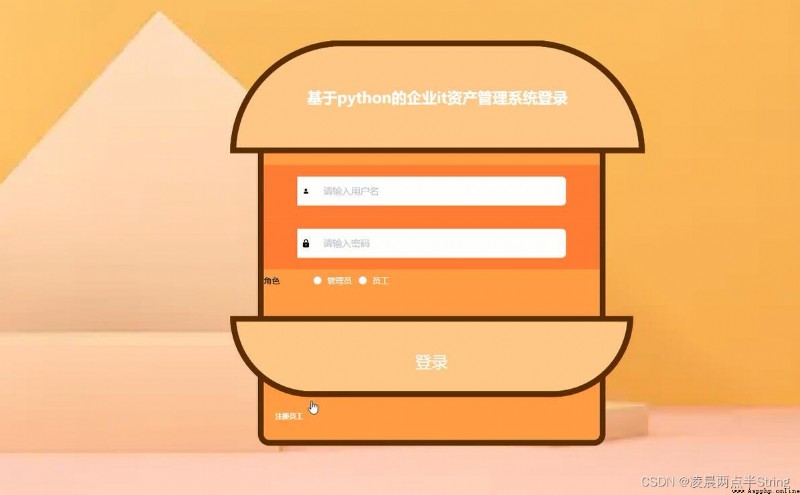
Item number : python224django be based on python The enterprise it Asset management system
development language :Python
python frame :django
Software version :python3.7/python3.8
database :mysql 5.7 Or later
Database tools :Navicat11
Development software :PyCharm/vs code
The front frame :vue.js
Employee management , On the employee management page, you can index , Employee job number , Employee name , Gender , department , Position , Entry time , Contact information , mailbox , Id card , Photos and other contents , Modify or delete 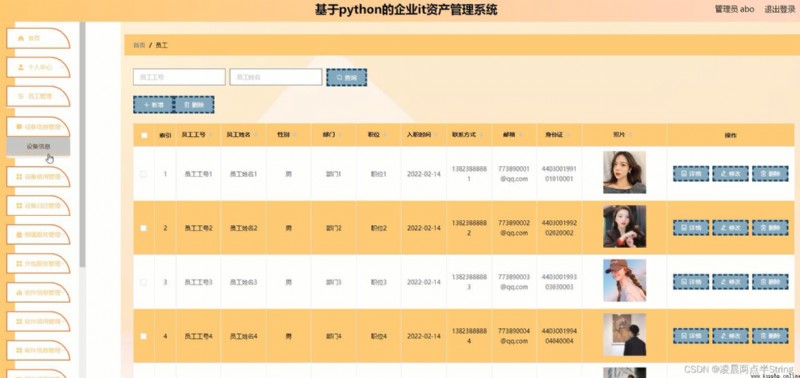
Equipment information , On the device information page, you can index , Equipment serial number , Equipment name , picture , Device type , Number , purpose , matters needing attention , Location , Registration time , Details of registrant and other information , To borrow , The return , modify , Delete and other operations 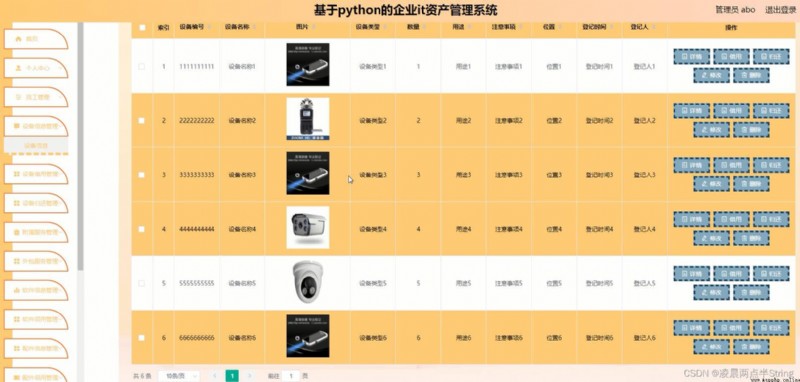
Equipment borrowing management , On the equipment borrowing management page, you can index , Borrowing number , Equipment serial number , Equipment name , picture , Device type , Number , purpose , matters needing attention , Location , Take time , Employee job number , Employee name , department , Position , Contact information , Notes and other information , Modify or delete 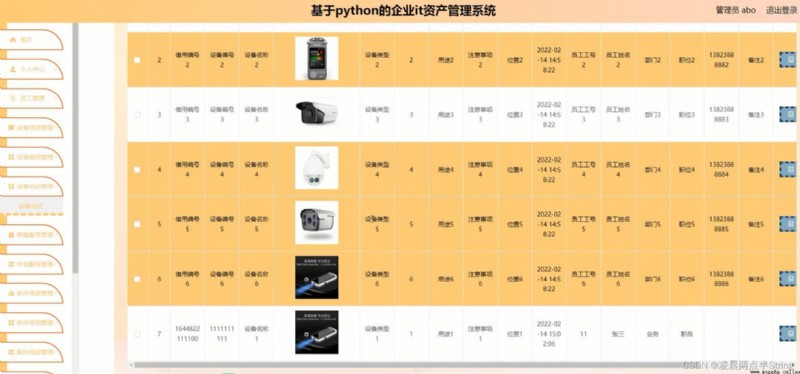
Objective record
pick want I
Objective record III
Chapter one summary
1.1 Research background
1.2 Development significance
1.3 Research status
1.4 research contents
1.5 The structure of the paper
Chapter two Introduction to development technology
2.1 Python brief introduction
2.2 mysql Database introduction
2.3 MySQL Environment configuration
2.4 Django Introduce
2.5 B/S framework
3.1 Feasibility analysis
3.1.1 Technical feasibility
3.1.2 Operational feasibility
3.1.3 Economic feasibility
3.1.4 Operational feasibility
3.2 Performance requirements analysis
3.4 Functional analysis
Chapter four The system design
4.1 Functional structure
4.2 Database design
4.2.1 database E/R chart
4.2.2 Database table
The fifth chapter System function realization
5.1 Administrator function module
5.2 Employee function module
Chapter six The system test
Chapter 7 Summary and experience
7.1 summary
7.2 Experience
Cause thank
reference